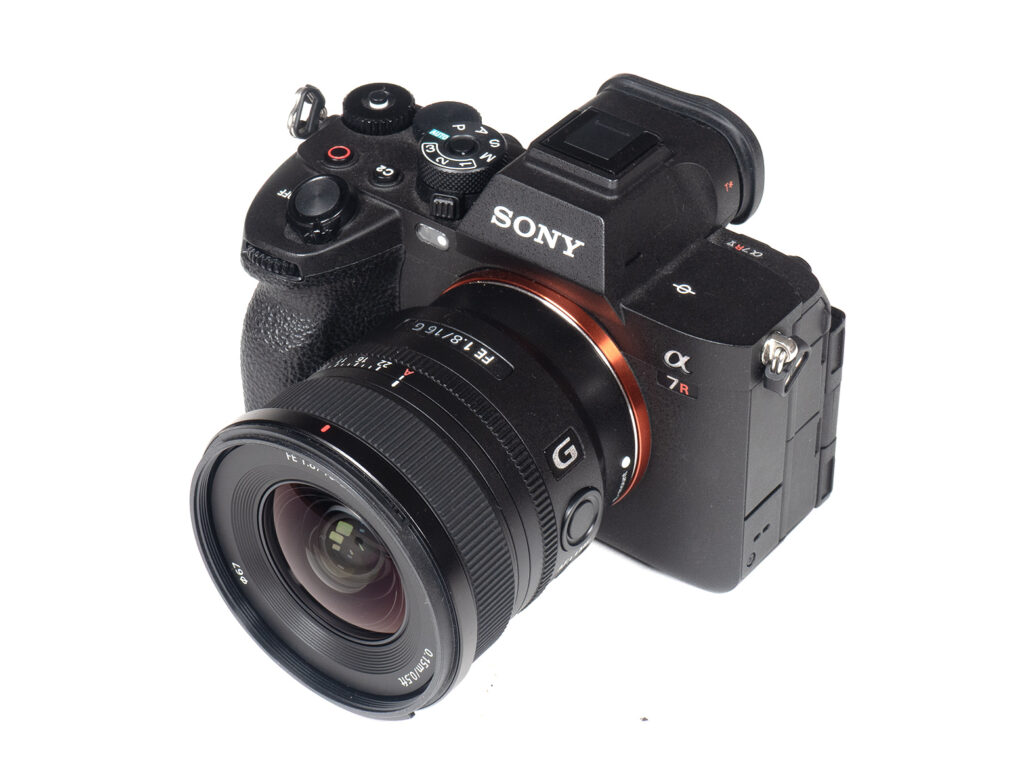Introduction
It appears that Sony can’t get enough ultra-wide lenses. The next one in line is the Sony FE 16mm f/1.8 G. It’s a slightly longer alternative to the FE 14mm f/1.8 GM. Unlike its GM cousin, it doesn’t have a bulb-like front element, so using filters is an option here. As you might expect, the G lens is somewhat more attractively priced at $800 USD / 1000EUR.
Upon first contact, you will certainly appreciate the (more) compact dimensions and low(er) weight. Realizing a 16mm f/1.8 in such a small package is quite an achievement – assuming that Sony managed to keep the optical performance intact. The mechanical implementation is impeccable. It’s based on sturdy engineered plastics based on a metal mount, including sealing against dust and moisture. The focus ring turns smoothly. The dedicated aperture ring has a nice click action to it – which can be de-clicked for video use. As usual with higher end Sony lenses, there’s also a focus stop button. A petal-shaped lens hood is part of the package.
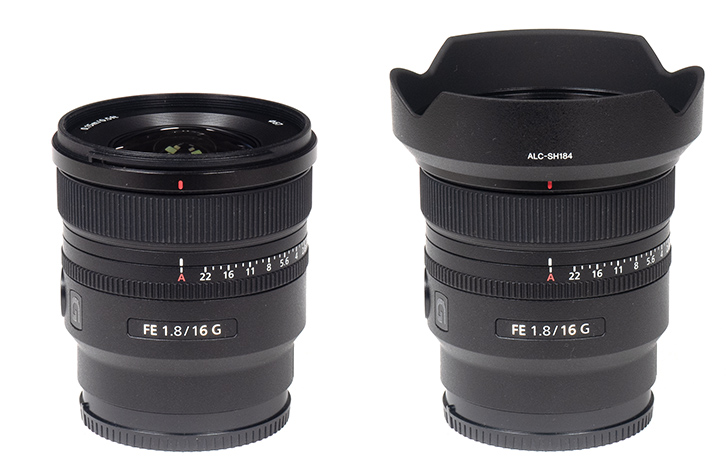
The FE 16mm f/1.8 G uses 2 XD (extreme dynamic) linear motors for focusing. The AF is both speedy and noiseless. Manual focusing works “by wire”, as usual.
| Specifications | |
|---|---|
| Optical construction | 15 elements in 12 groups, incl. 1x SUD, 3x UD, 2x AA |
| Number of aperture blades | 11 (circular) |
| min. focus distance | 0.25m (max. magnification 0.3x) |
| Dimensions | φ73.8 x 75 mm |
| Weight | 304g |
| Filter size | 67mm |
| Hood | petal-shaped (bayonet mount, supplied) |
| Available Mounts | Sony FE |
| Other features | Focus stop button aperture rings w/clickless mode & aperture lock dust and moisture resistant |
Distortions
Ultra-wide lenses tend to have rather high native image distortions. This is also true for the Sony lens. A barrel distortion of 4.7% is heavy although we have seen worse than this. Autocorrection comes to the rescue, of course.
FWIW, the Sony FE 16mm f/1.8 G is one of those lenses where Sony decided to disable the distortion controls in the menu.
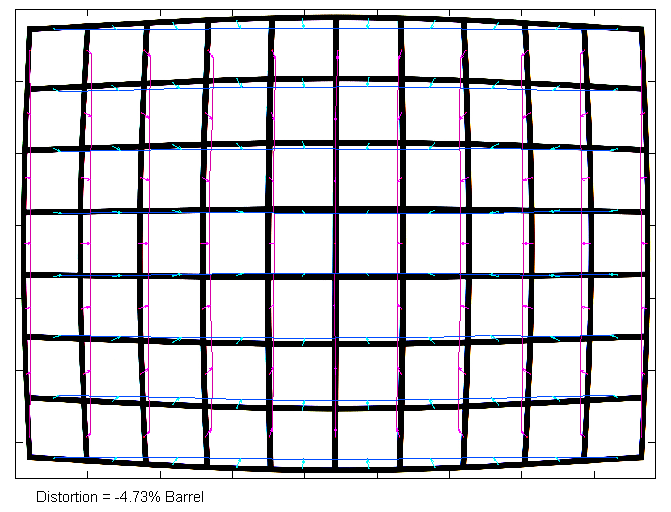
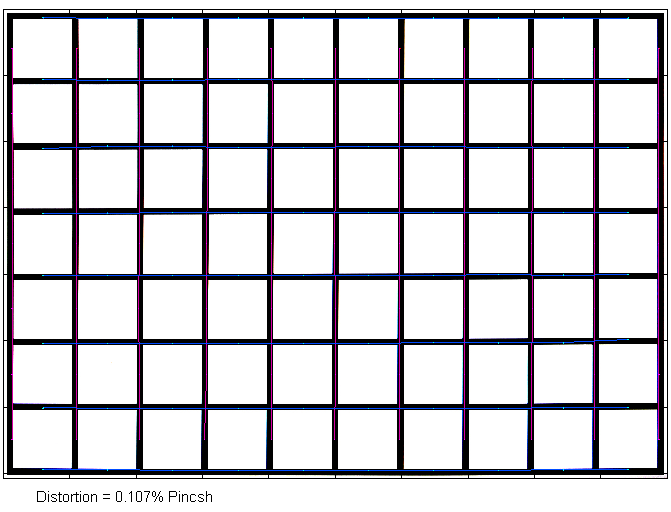
Vignetting
Sony G lenses come with one or two compromises compared to their GM counterparts. In the case of the Sony FE 16mm f/1.8 G, the compromise is vignetting control. Uncorrected RAW images show a vignetting of more than 5EV (f-stops) at f/1.8 and stopping down doesn’t make a hell of a difference. Autocorrection helps, but a resulting vignetting of 2.7 EV at f/1.8 is nothing to write home about – and it’s barely less so at medium aperture settings.
Basically, Sony decided to trade in vignetting for the compact design here.

MTF (resolution) at 42 megapixels
Despite the small design, Sony managed to keep the resolution on a very high level. The image center is already excellent at f/1.8, followed by a very good near-center field. The borders and corners are softer, of course, but stay within the “good” category. Stopping down to f/2.8 lifts the broader center to an outstanding level, and the outer image field is very good. The peak performance is reached at f/4. Diffraction has a more visible impact from f/11.
The centering quality of the tested sample was very good. The field curvature is fairly low.
Please note that the MTF results are not directly comparable across the different systems!
Below is a simplified summary of the formal findings. The chart shows line widths per picture height (LW/PH) which can be taken as a measure of sharpness. If you would like to know more about the MTF50 figures, you may check out the corresponding Imatest Explanations.
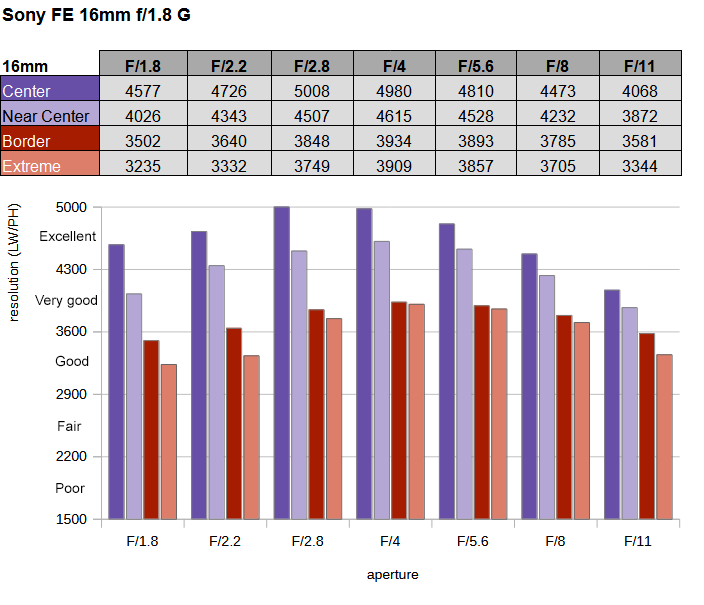
Chromatic Aberrations (CAs)
Lateral CAs are low, with a peak CA pixel width of ~0.5px or less at the image borders.

Bokeh
The quality of the bokeh is usually of lesser concern with ultra-wide lenses, but the Sony lens is faster than most lenses in it class, so let’s take a brief look.
Out-of-focus highlights are quite nicely rendered for a lens in this class, although needless to say that tele prime lenses are usually superior. The shape is perfectly circular near the image center. There is a bit of an outlining at the edges of the discs and the inner zone has a slight onion-like substructure.
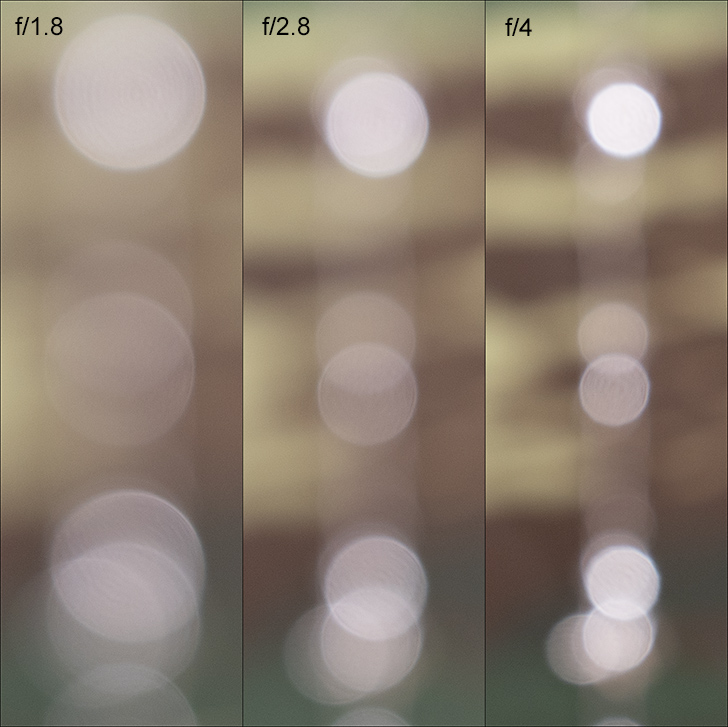
When looking at the hole image frame, the circular shape remains mostly intact. You may notice “bulb-like” highlights near the border in the image below – but this relates primarily to the shape of diodes used for this test. The ultra-wide lens has a very angled view on these diodes. In real life, you can expect a more ellipsoid shape here. Stopping down reduces the ellipsoid shape, and it’s mostly from f/4.
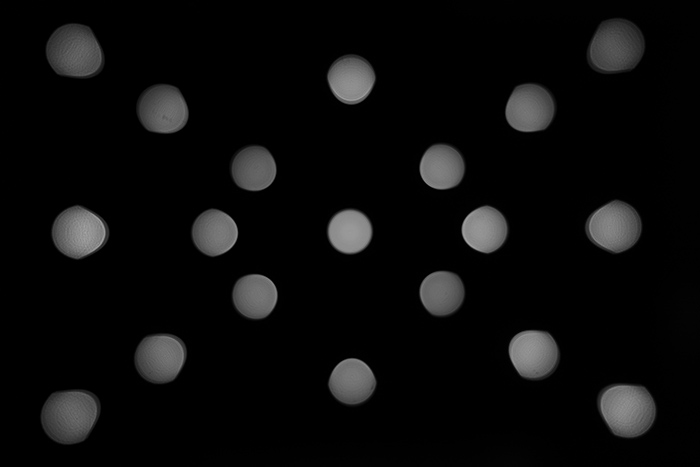
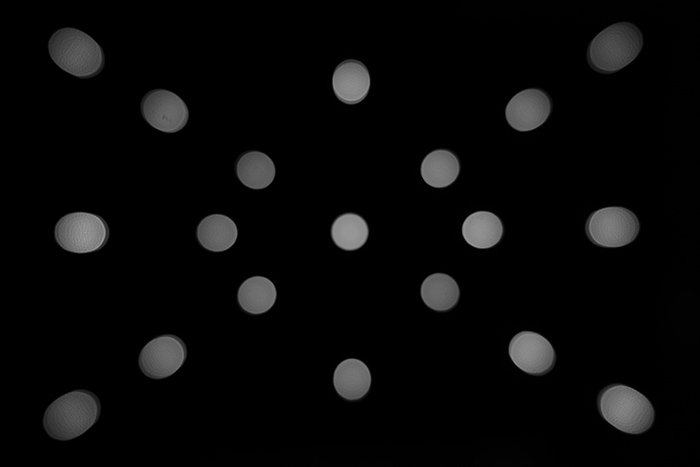
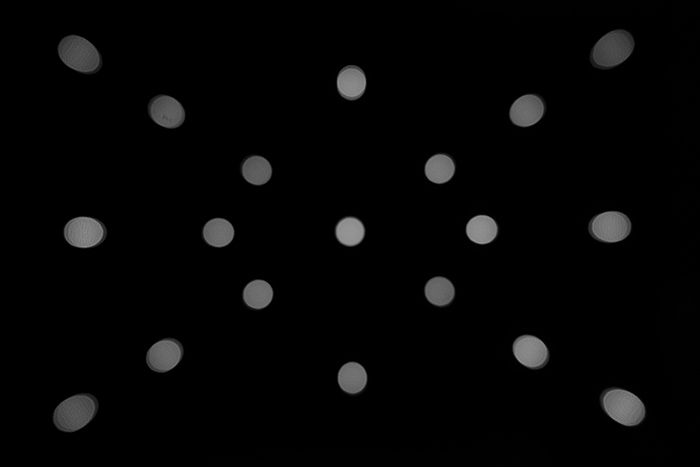
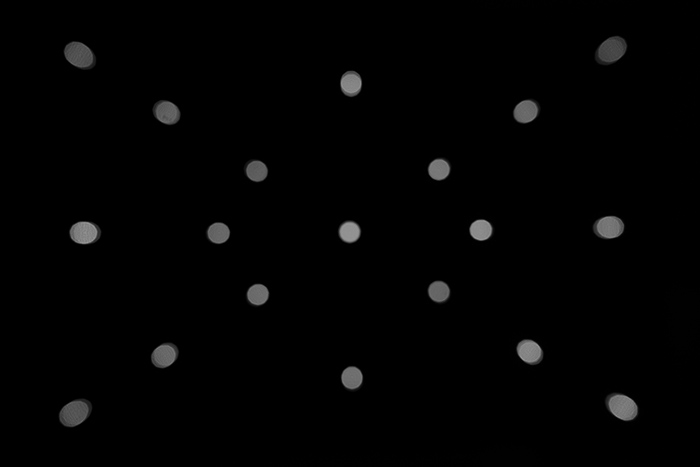
Sun Stars
Below is a sequence of 100% cropped images from f/1.8 all the way up to f/16 – illustrating the sun star behavior. Sun stars are an aperture effect that shows up if a bright light source is part of the scene (usually in night shots). Due to the circular aperture shape, the sun stars are non-existent at f/1.8 and f/2.8. They start to emerge at f/4, with the best results achieved between f/8 and f/16.
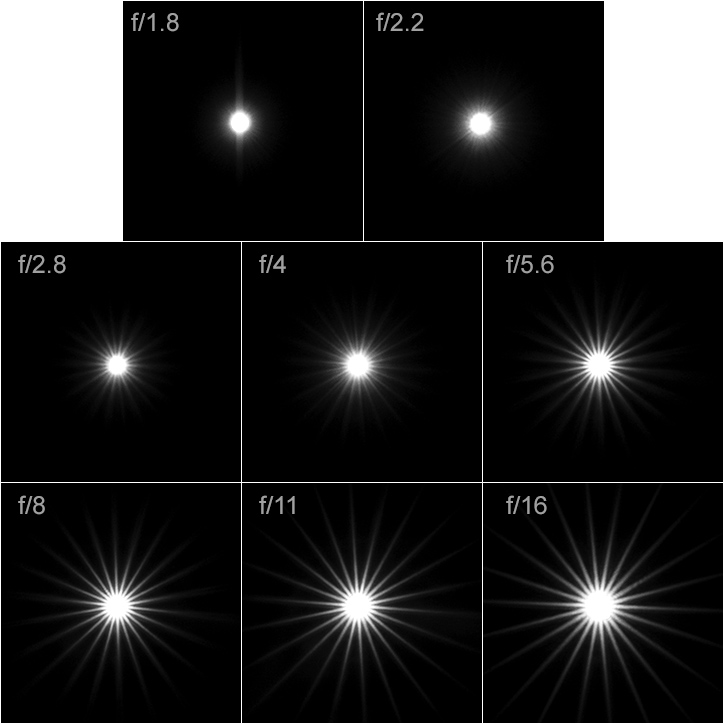
Competition
There are a couple of competing lenses in this class. The primary competitor is certainly the more affordable Viltrox AF 16mm f/1.8 LAB FE (to the left below). It is a bit better optically, but it is also much heavier and bigger. It probably won’t matter too much, but the AF in the Sony lens is superior in this comparison. Then there’s Sony’s own FE 14mm f/1.8 GM (center). The FE 16mm f/1.8 G is a bit sharper, which isn’t all that surprising given the wider field-of-view. The GM does produce less vignetting, though, so it doesn’t require as much of a signal boost – which can be important e.g. with astrophotography. If you want something truly special, there’s the awesome sigma 14mm f/1.4 DG DN ART (left) which is arguably the greatest lens in this category – if you can stand its size and weight that is. If you are seeking an even smaller lens, there’s the Sigma 17mm f/4 DG DN Contemporary (not shown). Of course, it’s MUCH slower – but many of us don’t really speed in this lens class. We’d still rate the Sony lens higher than the Sigma, though. And then there’s the new Samyang AF 16mm f/2.8 P FE – which we haven’t tested yet.
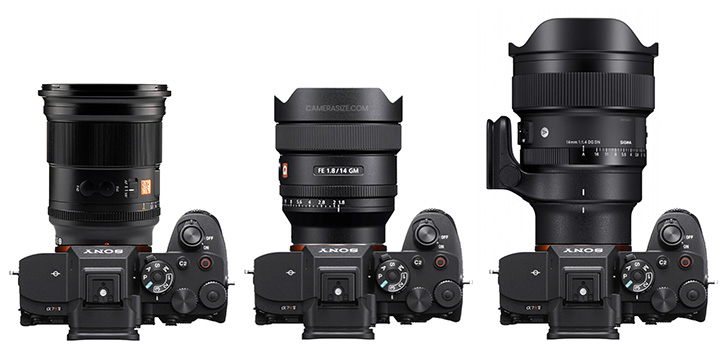
Sample Images
The Sony FE 16mm f/1.8 G may not excel in every category, but as a package, it could well be the most desirable ultra-wide prime lens. It is sharp enough at f/1.8 and quite impressively so at medium apertures. Lateral CAs aren't an issue to worry about. Image distortions are high in RAW images but fully auto-corrected. The bokeh is, of course, not perfect but still pretty good within the scope of this lens class. The biggest weakness is vignetting - and auto-correction can't eliminate the issue in full here.
A real differentiator is the size and weight of the Sony lens. At merely 304g, it undercuts comparable lenses by a substantial margin, and it doesn't compromise on build quality. It feels well made, is weather resistant and comes with a fast AF. Videographers will also like the de-clickable aperture ring. While the lens does exhibit a bit of focus breathing, owners of recent Sony cameras can take advantage of automatic compensation.
Overall, Sony has another winner here.
The Good
- Very compact and lightweight design
- Pretty sharp for such a lens
- Feels sturdy despite the low weight
The Bad
- Vignetting WAY too high
- Relies heavily on auto-correction for distortions
-
Optical Performance
-
Build Quality
-
Price / Performance


